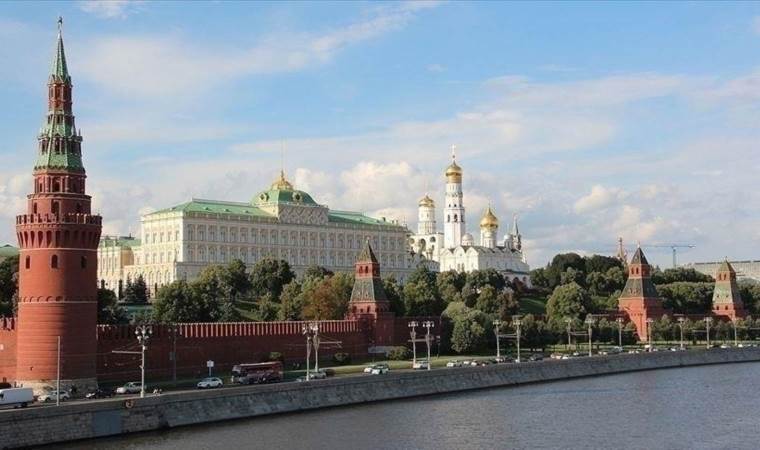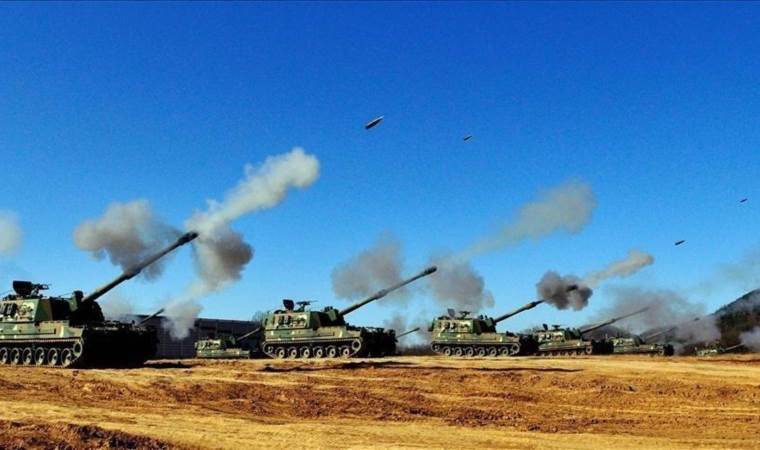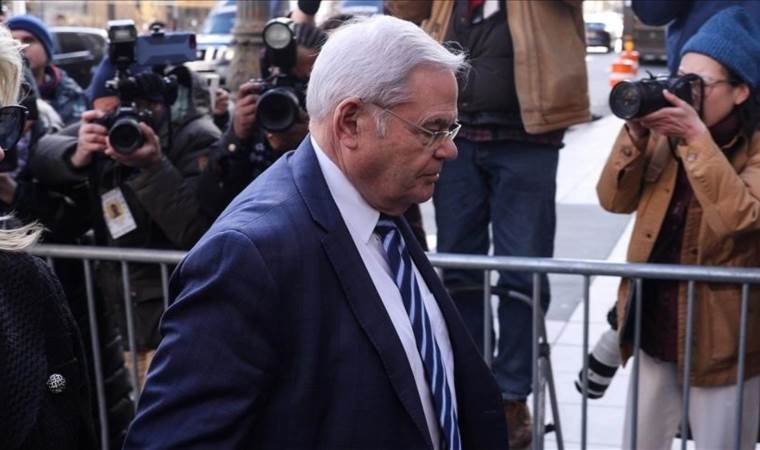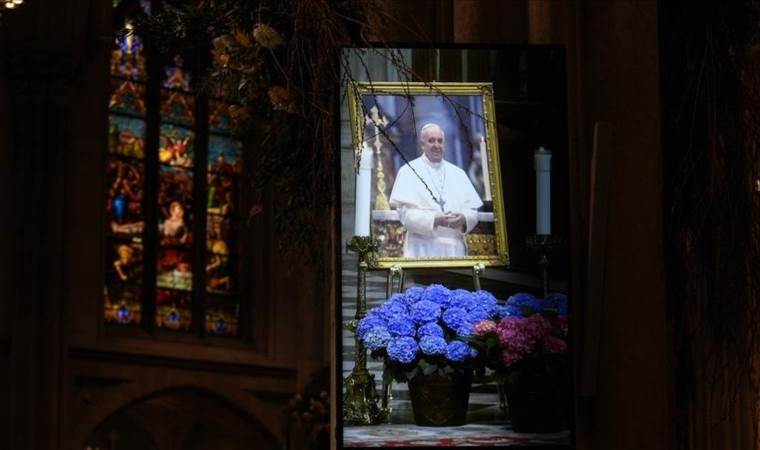Authors Columns of the Day Sport Guest Life All Authors
The San Francisco manifesto, the Demiral incident, and the Olympics
It is not feasible to cover the entirety of world history and the development of this divide in a short article, but to summarize: the West has organized itself to exploit the East and South. Through colonial practices, the West has drained the resources of Southern and Eastern countries for centuries, advancing its wealth and power.
Orientalism and the West's Obsession with Dominance
Palestinian-American philosopher Edward Said, in his groundbreaking 1978 book "Orientalism," introduced revolutionary perspectives on historical and social currents, particularly in Middle Eastern studies. His ideas are essential for understanding the complex power dynamics between East and West.
I recommend reading this book, but for now, I will share a few paragraphs:
"To understand thoughts, culture, and history deeply, it is essential first to examine their influences or power structures. Believing that the East was created from nothing or that some things emerged solely from the imposition of imagination is hypocrisy and insincerity. The relationship between the East and the West is one of power, domination, and complex hegemony. As K.M. Panikkar eloquently states in his classic work on Asian and Western superiority:
'Orientalism (the act of studying Eastern life, culture, and history) relies on this flexible positional superiority, which allows Westerners to engage with the East in countless ways without losing their relative advantage.'
The political questions posed by Orientalism are: What intellectual, aesthetic, scientific, and cultural energies were employed to form this colonial tradition? How did fields like philology, lexicography, history, biology, political and economic concepts, and literature serve the colonial perspective?
My hope is to define the dreadful structure of cultural dominance, especially to show formerly colonized societies the dangers and seductiveness of adopting or imposing this structure.
The historical conditions that made such an examination possible are quite complex; I can only list them briefly here. Since the 1950s, those living in the West, especially in the U.S., have witnessed an extraordinary and turbulent period in East-West relations. This concept of the East, including Russia, symbolized danger and threat."
Personal Experience with Racism in the Art World
Forty years ago, I was a young artist living in California. Details of this story can be found in my second published book, "The Right of Monkeys to Paint," or in the second volume of my autobiography, "Endless Ocean." But I will summarize briefly here.
In 1984, the San Francisco Museum of Modern Art (SFMoMA) was opening an international exhibition on the then-prominent movement of Neo-Expressionism. University officials, believing I should be part of this exhibition, introduced me to an assistant curator from the museum. The curator needed to see my works. After corresponding with the museum, the assistant curator sent me a letter: "Our museum director and curator Henry Hopkins do not have time to see your works. However, if you know other Middle Eastern Neo-Expressionist painters living in the San Francisco area, perhaps you can try organizing a small exhibition under this title elsewhere." In short, the message was clear: "Our museum director has no intention of even looking at visuals of your work. Because we see you as a separate race and a different group of people, you can gather among yourselves and perhaps console yourselves with a small exhibition. Thank you and good luck." Racism sometimes manifests openly and sometimes subtly in the lines of such "polite" messages.
With ten or eleven months remaining before the exhibition's opening, I decided to write a manifesto and make my stand at the exhibition's launch. Without hesitation, I meticulously organized my actions and executed my plan by distributing a concise and impactful manifesto during the exhibition's opening and the subsequent international symposium. "Life is a calculated risk," my dear father used to say. That day, I was prepared to face any risk, including deportation from the U.S., because I knew I was right and had a solid response to any arrogance that might be directed at me. I was not afraid of any argument. I had perhaps only $20 in my pocket, but I was confident that the manifesto distributed by some close young American art student friends who joined me that day would go down in history. Never before had I encountered or heard of a more irresponsibly written racist letter. Confident in myself, I knew the photos we took that day, the distributed manifesto, and the action taken held significant value. That day, in that geography, the West's hypocrisy, racism, anti-democratic stance, and false historical narratives were recorded. Various world-renowned art historians later wrote articles and books supporting my position.
Published Book in England After 32 Years
In 2016, the renowned publishing house Penguin Books in London published "Why Are We 'Artists'?", a book featuring the 100 most important manifestos in art history. Among them was the "San Francisco Manifesto" I distributed that day. It was also gratifying that Turkey was represented with the "d Group Manifesto" from 1933. I was thrilled with the book's release. Hundreds of newspapers and magazines had mentioned the action, but being included in such an important and enduring book was particularly rewarding. Was I surprised? No! Even at 27, I was confident in the truth of what I had written. The West was ready to distort history for its interests, to limit historical production to just four or five Western countries, and to exclude people with Southern and Eastern passports from such high-level intellectual gatherings. Their misfortune was that all this prejudiced hypocrisy and racism were exposed and recorded there.
Simple Examples of Western Hypocrisy
If we were to list examples, we would need to write entire books, not just a paragraph in an article. I will provide a few reminders here. When the "Armenian genocide claims" were raised, the West condemned Turkey without listening to its arguments, passing anti-democratic decisions and erecting monuments. In Cyprus, in 1974, they ignored the coup by Nikos Sampson and acted as if Turkey had occupied half the island without reason, displaying disgraceful behavior in international diplomacy. In 2003, the U.S. entered Iraq supposedly to find weapons of mass destruction, but after eight years, with no evidence of such weapons and having killed 1.5 million people, they returned triumphantly to the U.S. without even a dry apology. This was the ease of Western justice and "democratic" perspective. They would condemn attacks on Ukraine, but when the aggressor was Israel bombing Gaza, they fell into a great silence and blindness, unable to distinguish between fighting terrorists and bombing civilians. Ultimately, the mighty West, with its incredible skill in adapting the concepts of right and law to suit its needs, had statesmen, media, and even philosophers who could manipulate every situation to their advantage.
The Demiral Incident: A Closer Look
In many of my articles and speeches criticizing the Western art world for writing art history behind closed doors, limited to four or five wealthy Western countries, I have noted that such practices are impossible in sports. International competitions allow every country to participate, fostering a much more honest and equitable environment.
You might notice the same American, French, German, and Italian artists in the museum exhibitions opening these days. The major retrospective exhibitions in prominent museums are not chosen based on global fairness; these decisions are influenced by the commercial galleries of those countries and their cultural ministries' prestige battles. However, in football, volleyball, athletics, shot put, basketball, and tennis, countries participate in qualifiers with equal rights, winning or losing international competitions based on merit... or so we thought. Not always!
Take, for example, last week's match where we lost 2-1 to the Netherlands. Merih Demiral did not play. What would have happened if he had played? I believe the Netherlands would not have won. Why didn't Merih Demiral play? Because after our victory over Austria, he made the wolf sign during the post-match celebrations. UEFA seized this opportunity to open an investigation, and the UEFA Disciplinary Committee, hastily convened, handed Merih Demiral a two-match ban.
Initially, a significant portion of the Turkish public was angry with Merih Demiral for making such a political gesture post-match, dampening the joy of millions. The sports field is not a place for political symbols. We could criticize and harshly reprimand him for such a reckless act. However, UEFA saw this as an opportunity to harm the Turkish team and quickly intervened to sabotage our star player from the previous match.
UEFA's action was, once again, racist. While watching the post-match news or reading about UEFA's punishment, you probably recognized this racism and reacted. Given the context of this article, are you still surprised by the punishment given to Merih Demiral, or do you see it as yet another example of the West's expected behavior, shamelessly carried out?
The same UEFA, after the Slovakia match, gave Jude Bellingham a simple fine for persistently making obscene gestures towards the spectators and ignored players who prayed or made religious gestures before or after matches. However, Merih Demiral had to be severely punished and excluded from the tournament because, in their eyes, he was an outsider, not from the religions of Western civilizations. Would you like to laugh a bit more? One of the UEFA Disciplinary Committee's vice-chairmen was from Austria, whom we had defeated, and the other was from the Netherlands, our next opponent!
As a result, we paid the price for Demiral's absence. We felt his absence in both goals we conceded. Our coach, seemingly "groggy" in boxing terms, forgot about his right to make substitutions as the Dutch attacks poured in during the second half. Such a passive decision cannot be consciously made by any coach!
Yazarın Son Yazıları All Columns
Günün Köşe Yazıları
Most Read News
-
 China integrates AI into undergraduate studies
China integrates AI into undergraduate studies
-
 South Korea, US to hold trade talks this week
South Korea, US to hold trade talks this week
-
 Germany cuts economic growth forecast to stagnation for
Germany cuts economic growth forecast to stagnation for
-
 6.3 magnitude earthquake strikes off Indonesia’s Talaud
6.3 magnitude earthquake strikes off Indonesia’s Talaud
-
 Kremlin says Putin open to talks on civilian strikes mor
Kremlin says Putin open to talks on civilian strikes mor
-
 South Korean military holds live-fire drills near inter-
South Korean military holds live-fire drills near inter-
-
 Wife of former US Senator Menendez found guilty in bribe
Wife of former US Senator Menendez found guilty in bribe
-
 Harvard University sues Trump administration over fundin
Harvard University sues Trump administration over fundin
-
 Zelenskyy demands Russian clarity over strikes on civili
Zelenskyy demands Russian clarity over strikes on civili
-
 Pope Francis' funeral to take place on April 26, Vatican
Pope Francis' funeral to take place on April 26, Vatican











